Symbols of the University | The Cornell Public Library | Cornell’s Twelve Presidents | | Andrew Dickson White, President, 1866-1885 | | Charles Kendall Adams, President, 1885-1892 | | Jacob Gould Schurman, President, 1892-1920 | | Livingston Farrand, President, 1921-1937 | | Edmund Ezra Day, President, 1937-1949 | | Deane Waldo Malott, President, 1951-1963 | | James Alfred Perkins, President, 1963-1969 | | Dale Raymond Corson, President, 1969-1977 | | Frank Howard Trevor Rhodes, President, 1977-1995 | | Hunter Ripley Rawlings III, President, 1995-2003 | | Jeffrey Sean Lehman, 2003-2005 | | David J. Skorton, 2006 | Inaugurating the Presidents |
| Cornell’s Twelve Presidents Andrew Dickson White, President, 1866-1885 Andrew Dickson White, through his “Plan of Organization” and Inaugural Address, enunciated the ideals of the new university. White was largely responsible for recruiting faculty to come to the new institution. He traveled in Europe to purchase collections and to learn about the newest innovations in technical education. As President, he was instrumental in the development of the university’s library and of its other collections, by his own purchases and through encouraging the gifts of others.
White had long considered coeducation an integral part of his educational plan. He had advocated it while he was at Michigan, deliberately selected the word “person” in the Cornell charter, and urged it in his Inaugural Address. In 1871, White and Henry W. Sage visited a number of coeducational institutions and presented a remarkable report in support of coeducation to the Board of Trustees.
White was responsible for other educational developments. He suggested the establishment of mechanical laboratories and workshops for the Department of Mechanical Engineering and bought its first piece of equipment, a power lathe. He promoted the first Department of Electrical Engineering in the U.S., taught and encouraged historical studies, and founded the Department of Political Science “for practical training.” He suggested and promoted the amendment of the Charter by the State Legislature to provide for the election of Alumni Trustees. He encouraged the Trustees to provide scholarships and fellowships out of university funds. Through his encouragement, donors like Hiram Sibley and John McGraw supported the construction of the buildings that bear their names, and Jennie McGraw gave the first bells of the chimes.
Andrew Dickson White was born in 1832 in Homer, New York. He attended Hobart College and then graduated from Yale University. He traveled in England, lived and studied history in France and Germany, and served as the attaché to Thomas Hart Seymour at the American Legation in St. Petersburg. During that three year trip, he continued his reading, attended plays, visited libraries and museums, and became a serious book collector. He became a professor of history at the University of Michigan, where he stayed until the death of his father brought him back to New York in 1860. He became active in Republican politics and was elected to the New York State Senate in January 1864, where he met his fellow senator, Ezra Cornell.
White was a distinguished scholar, lecturer, and writer. His major work, A History of the Warfare of Science with Theology in Christendom, was published in at least six languages during his lifetime. He served as the first president of the American Historical Association, and as president of the American Social Science Association.
During and after his years as president of the university, White also had a distinguished diplomatic career. He served as Commissioner to Santo Domingo in 1871, as United States Minister to Berlin from 1879 to 1881, as Minister to Russia from 1892 to 1895, as a member of the Venezuela Boundary Commission in 1896 to 1897, as president of the American delegation to The Hague Peace Conference in 1899, and as Ambassador to Germany from 1897 to 1902. Andrew Dickson White died at his Ithaca home on November 4, 1918. << Prev | Next >> | 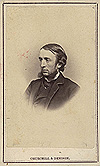 + +
Andrew Dickson White
Andrew Dickson White, ca. 1865, the year the charter for Cornell University was signed into law. A. D. White was thirty-three.
Albumen print carte de visite photograph.

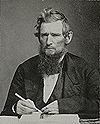 + +
Ezra Cornell
Ezra Cornell in about 1865, the year in which the charter for Cornell University was signed into law. 
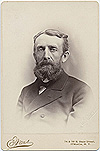 + +
Andrew Dickson White at the end of his Presidency
Andrew Dickson White in 1885, the year he retired as President of Cornell University.
Albumen print cabinet card photograph. 
 + +
Letter from A. D. White to Ezra Cornell
I sent to you at the Astor House a batch of introductory letters to Professors in Columbia Yale & Harvard and hope you received them and used them. If not - we must go together before long.

 + +
The 1882 Cornell University Faculty
The Cornell University faculty members pose on the steps of McGraw Hall in 1882.
Albumen print photograph. 
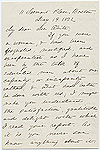 + +
Letter from Martha L. B. Goddard to Andrew Dickson White
Letter from Martha L. B. Goddard to Andrew Dickson White, May 19, 1872
If you were a woman, and had been disgusted, mortified, and exasperated as I have been by the talk of educated men about our capacity, or incapacity rather, & what had better be done with us; I might make you understand the satisfaction, gratitude, and delight with which I read your report. As it is you never can know anything about it. Please, can I have another copy? I cut the one you sent me into pieces for the Advertiser; I wish they could have spared room for the whole of it, but that was impossible, & I had no time to copy. I do want one to keep. 
 + +
Letter from Martha L. B. Goddard to Andrew Dickson White, continued

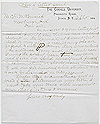 + +
Letter from A. D. White to C. H. McCormick regarding African-American students at Cornell
Draft of letter from Andrew Dickson White to C. H. McCormick, September 5, 1874
Copy of letter sent
In answer to your letter first received, I would say that we have no colored students at the University at present but shall be very glad to receive any who are prepared to enter. Although there is no certainty, the entrance of any such students here during the present year, they may come and if even one offered himself and passed the examinations, we should receive him even if all our five hundred white students were to ask for dismissal on that account.
The first African-American students, Charles Chauveau Cook, Jane Eleanor Datcher, and George Washington Fields graduated in 1890. 
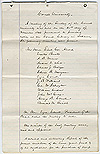 + +
Manuscript minutes of the Board of Trustees, November 21, 1866
The Board of Trustees unanimously nominated A. D. White as the first president of Cornell University. 
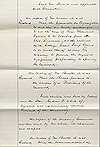 + +
Manuscript minutes of the Board of Trustees, November 21, 1866, p. 5
The Board of Trustees unanimously nominated A. D. White as the first president of Cornell University 
|
